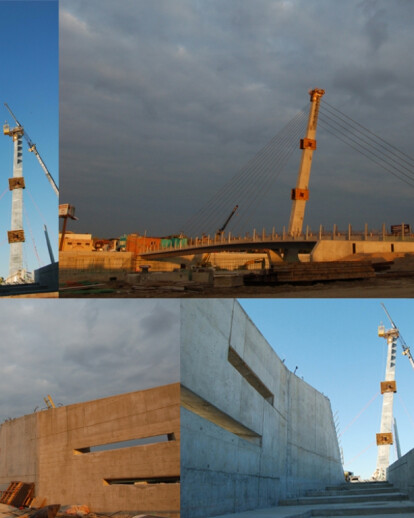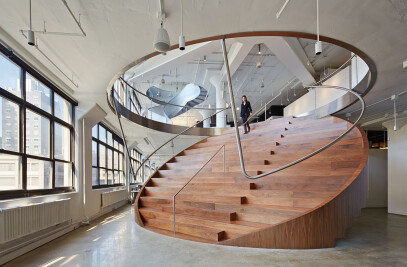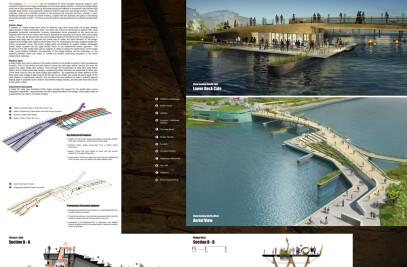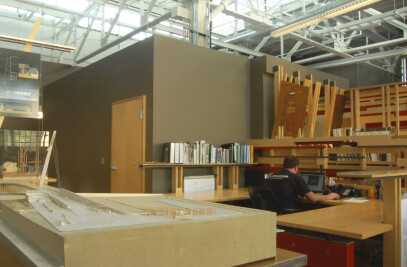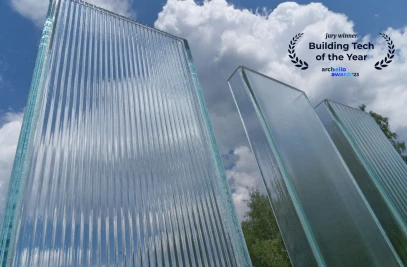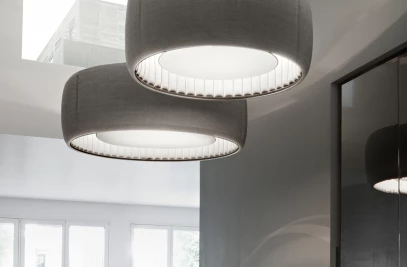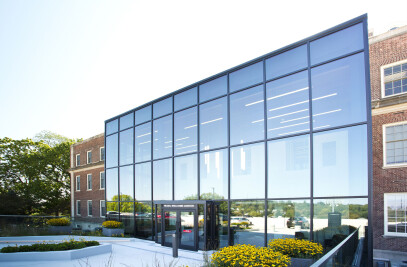A significant community in Southwest Detroit, Mexicantown, has a unique locational strength and history, having attracted immigrant Mexican families to the area since the early 1920's. The community is adjacent to the Ambassador Bridge which connects the U.S. to Canada and is the largest border crossing in North America. The heart of Mexicantown, along Bagley Avenue, is defined by a restaurant district, retail, a youth center and a variety of cultural enterprises. Additional landmarks present in the area include Ste. Anne de Detroit Church; the Michigan Central Station; and the city of Detroit skyline. The cohesiveness of the community was abruptly interrupted in the late 1960's by the introduction of two interstate highways, I-96 and I-75, which bifurcated the community in an effort ease congestion from the Ambassador Bridge. Subsequent community out-migration and land erosion, due to General Services Administration (GSA) expansions, have furthered blight and decline in the region. In 1998 a competition, sponsored by the Ambassador|Gateway Steering Committee, was commissioned to design a new pedestrian bridge to establish a re-connection along Bagley Avenue and to serve as a signature gateway presence into the U.S. from Canada. The competition was part of an Environmental Impact Study submitted to the Federal Highway Administration (FHWA) in order to mitigate the damages caused to the community by the original highway developments and to be a part of a much larger infrastructure improvement known as the Ambassador|Gateway Project. The principal purpose of the Ambassador|Gateway project, as set forth by the steering committee, is to improve access to/from the vehicular bridge linking Detroit, MI to Windsor, ON, through highway expansion and interchange improvements. Given the context of the competition, the initial criteria was to provide an elevated pedestrian bridge, rising 15.5 feet clear of the adjacent service drives. The winning competition scheme, as part of this multi-million dollar highway interchange expansion, began in a web of conflicting political, social and financial agendas. Land acquisition rights, expenditure and budgetary concerns, traffic shifting, structural considerations and general posturing led to the development of numerous proposals and shifts in methodology to accommodate the changes. Throughout this process, the design remained true to the philosophy set forth in the original competition entry which identified and preserved the context of the project while remaining sensitive to the adjacent community. The final design proposed a more comprehensive scheme, including an at-grade landing at both the East and West aprons and approximately 41,000 sq.ft. of public plaza, which blended into the landscape and reconstructed the existing void as programmed, occupiable plaza space. The bridge would act as a mediator to the adjacent city and community landmarks which speak to the notion of place at various scales. Each of these landmarks; The Ambassador Bridge; Michigan Central Station; Ste. Anne de Detroit and the Detroit skyline; has its own symbolic significance to the nation, state, city and community. The morphology of the Bagley Avenue Pedestrian Bridge responds to the each alignment through a series of apertures, juxtapositions and orientations during the processional experience over the bridge. The recognition of these landmarks as part of the journey reinforces the intent beyond simple proximity and adjacency.
Products Behind Projects
Product Spotlight
News

Toronto residence is a contemporary reimagining of traditional Edwardian gable homes
Toronto-based architecture and interior design studio Batay-Csorba Architects (BCA) has completed th... More

Kingspan announces the launch of the 2025 MICROHOME competition with a 100,000 euro prize fund
Kingspan's MICROHOME 2025 competition, organized by Buildner, returns with a prize pool of 100,000 E... More

New psychiatric clinic in Tampere, Finland provides example of “healing architecture”
Danish architectural studio C.F. Møller Architects worked in collaboration with Finnish studi... More

Kirkland Fraser Moor adopts biophilic approach to design of picturesque Foxglove House
Multidisciplinary architectural studio Kirkland Fraser Moor (KFM) has adopted a biophilic approach t... More

25 best architecture firms in Vietnam
Vietnam occupies the eastern edge of Southeastern Asia and boasts a diverse landscape of mountains,... More

25 best carpet, carpet tile and rug manufacturers
Carpets, carpet tiles, and rugs add elegance to interiors while providing comfort and warmth. These... More

SOA Architekti designs new fire station with a down-home sensibility and contemporary flair
Architectural studio SOA Architekti has completed a new fire station in Dolní Jirčany, a vill... More

Temperaturas Extremas designs tree-like water reservoir with bird nests in Luxembourg City
Spanish architectural studio Temperaturas Extremas has designed a bird and mammal refuge and water r... More
